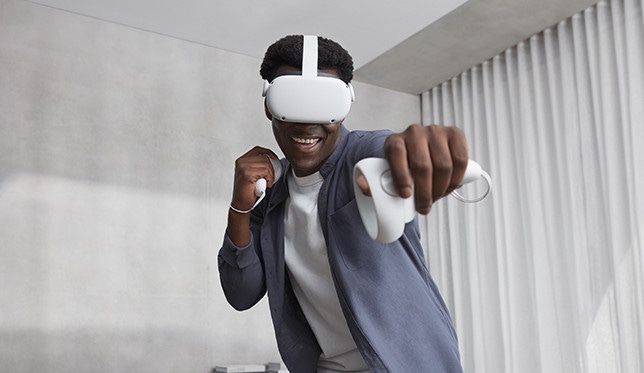Facebook has taken another big step towards bridging the gap between virtual reality and social networking, which could mean additional strain on mobile networks.
September 17, 2020

Facebook has taken another big step towards bridging the gap between virtual reality and social networking, which could mean additional strain on mobile networks.
Its Oculus VR unit this week took the wraps off its Quest 2 headset, which comes with a higher-resolution display, more RAM and a faster processor. Perhaps most importantly though, it comes with a smaller price tag: $299 versus $399 for its predecessor.
This lower price point should go some way to extending the appeal of VR beyond the avid gaming market to casual gaming and may also spur the uptake of social VR.
Other factors are at play here too. Quest 2 is the first headset that will require users to sign in with their Facebook credentials rather than their Oculus credentials, enabling closer alignment between users’ VR and social networking activities.
In addition, as well as the usual lip service about partnerships with big game studios, Oculus also announced that Facebook Messenger will be added to the Quest platform in the coming months. As well as being able to chat on Messenger without removing their headset, users will also be able to invite friends to join them in a VR gaming session. Oculus has also introduced ‘Challenges’, which will let players “create mini-tournaments for your friends and the VR community,” the company said, in a statement.
These developments have implications for network operators. For example, due to its real-time nature, VR requires a quick, low-latency connection. With headsets like the Oculus Quest 2 – which can either be tethered to a PC, or used completely independently of one – as much of the heavy lifting as possible is done on the device. Hence it has the latest Qualcomm Snapdragon XR2 VR chipset and 6 GB of RAM. With all that processing taking place at the client end of the network, a suitably fast and responsive access network is required to send all that data to where the session is being hosted.
The potential strain on the local access network could be amplified if and when Oculus achieves its objective of taking VR mainstream.
According to a research note this week from analyst firm IDC, the VR market suffered a covid-19-related setback this year thanks to supply chain disruptions and delayed product transitions. As such, shipments in 2020 are forecast to decline 6.7 percent on 2019.
The setback is only expected to be temporary though, and IDC expects shipments of VR headsets to see a compound annual growth rate (CAGR) of 48 percent from 2020-2024.
“We’re seeing increased interest in VR from both consumer and commercial buyers,” said Tom Mainelli, group vice president, device and consumer research at IDC. “We expect a sizeable increase in shipment volume during the second half of this year as production ramps up and new products launch into the market, and VR should see a return to robust growth in 2021.”
About the Author(s)
You May Also Like








.png?width=300&auto=webp&quality=80&disable=upscale)


_1.jpg?width=300&auto=webp&quality=80&disable=upscale)


.png?width=800&auto=webp&quality=80&disable=upscale)